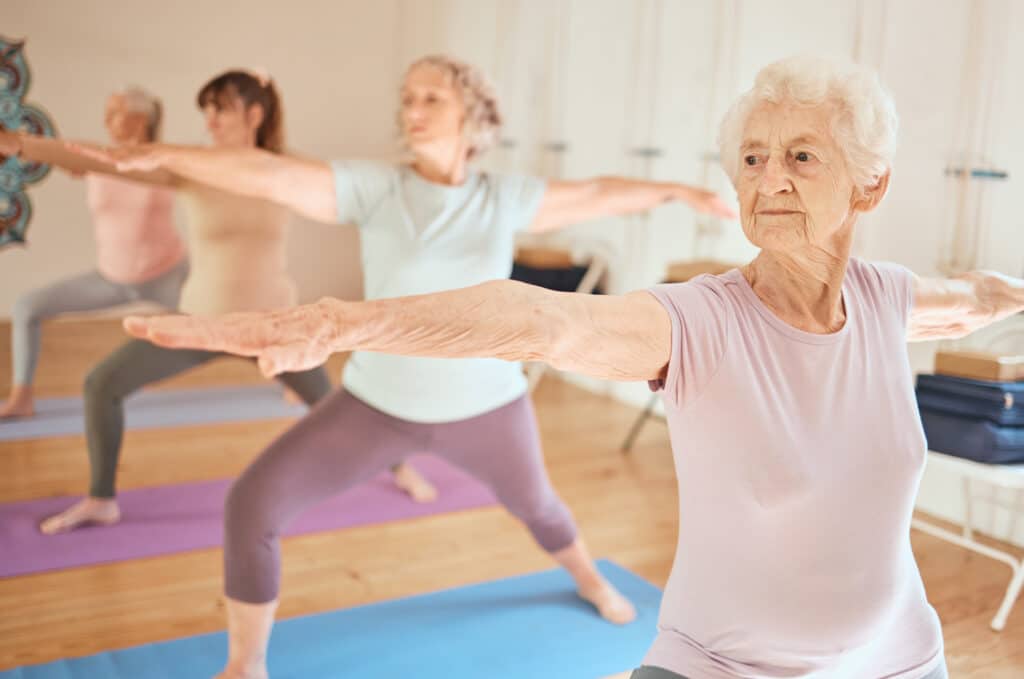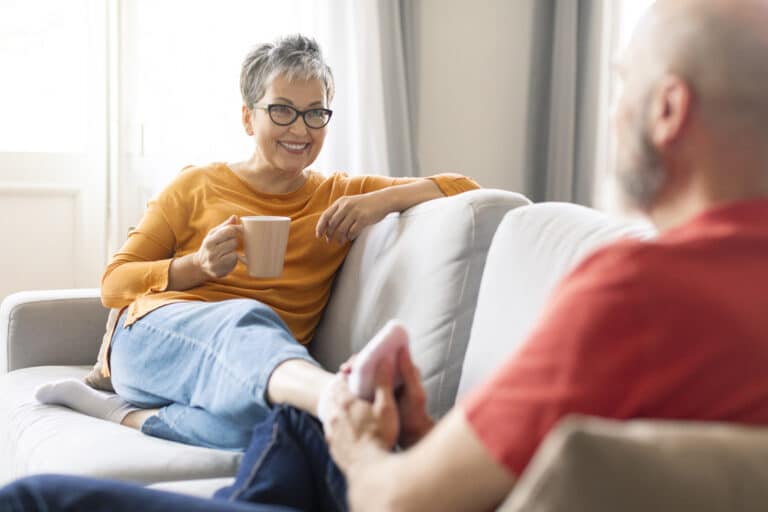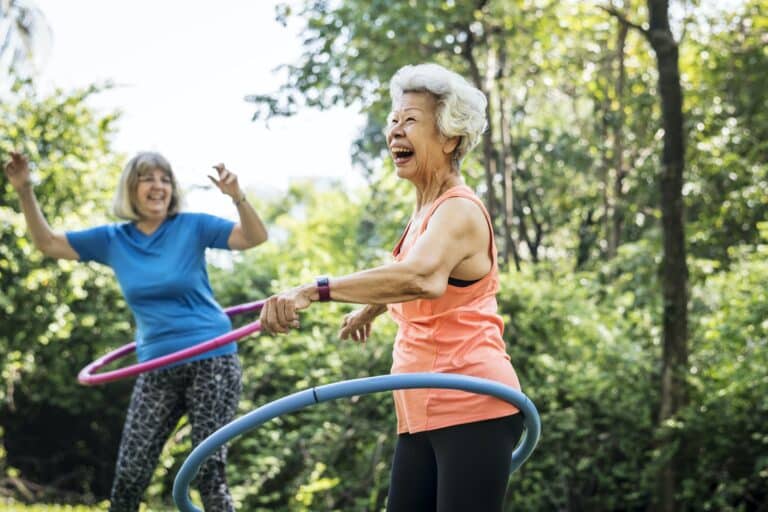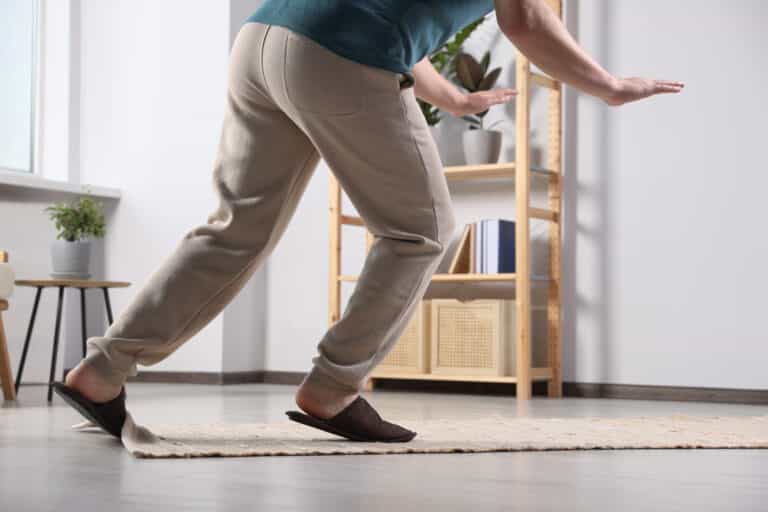Do you feel a stubborn pain in the front of your hip when you walk, get out of a chair, or stand up? Hip flexor pain is a common condition that can make it difficult for older adults to participate in daily life and be tricky to overcome.
Healthy hip flexors are important to your overall health and well-being, including getting around and staying balanced. While you might be making it through the day with hip flexor pain, starting a plan to beat it is a big deal.
Simple physical therapy exercises like standing marches and bridges can help, but it’s important to understand how to do these exercises properly.
As a physical therapist, I’ve helped many older adults overcome the pain and discomfort they experience because of hip flexor problems. Today, I’ll share some of the most important information about keeping your hip flexors healthy and preventing future pain so you can maintain an active lifestyle.
What are Hip Flexors?
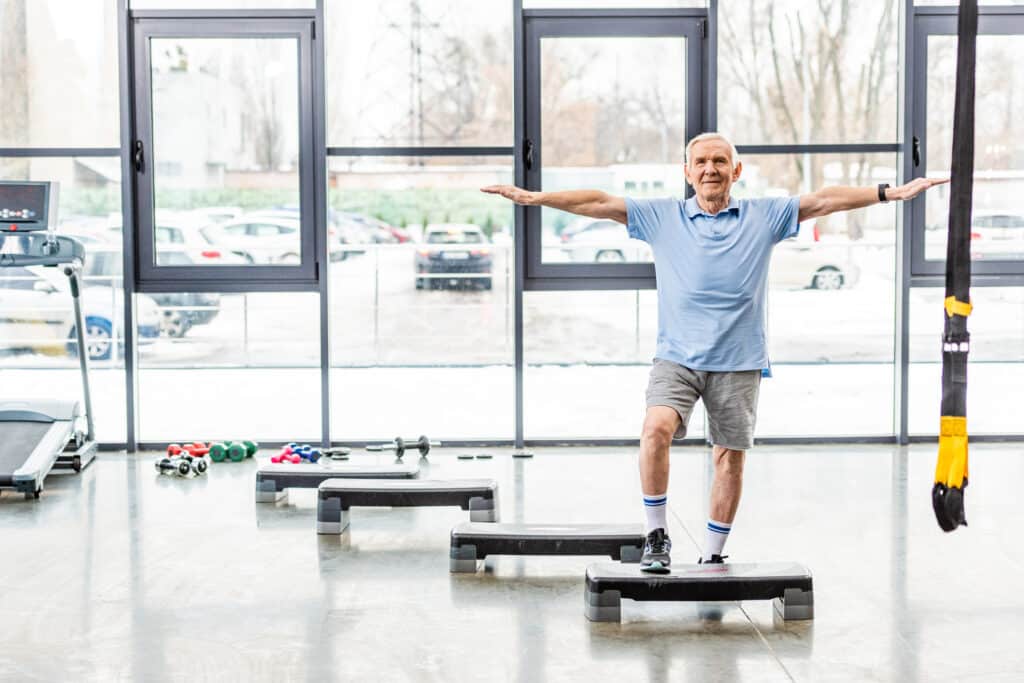
Put simply, hip flexors are a group of muscles that act as the “hinges” connecting your upper and lower body. When working properly, they help bend and stabilize your hip joint during certain movements. These include every time you walk, run, stand, lift your knee, or bend at the waist—that’s quite a few!
Healthy hip flexors keep you moving freely and can also help reduce lower back pain.1
Adding the right amount of stability to your lower back can help distribute the stress from the rest of your body during activity.
I’ve worked with plenty of patients experiencing lower back pain who ultimately have some problem with their hip flexors. With the right treatment, they’ve seen big improvements. Of course, this goes both ways, so many people with hip flexor pain will also have something happening in their lower back that needs to be addressed.
Common Causes of Hip Flexor Pain

Hip flexor pain is a pretty common issue, especially considering that the cause can be overusing or underusing the hip flexors—that makes the list of activities that can lead to hip flexor problems fairly long.2
Many of my patients are curious about why their hip flexors suddenly give them trouble when they haven’t had an injury. Pain in the hip flexors can be attributed to a range of issues, which you may or may not realize are causing extra stress on your body.
Here are some common ways that hip flexors can be irritated without a clear injury:
- Overuse during activities such as running or cycling or from a repetitive movement at work.
- Sitting and Other Sedentary lifestyle habits that put your hip flexors in their shortest position for long periods.
- Not warming up properly before exercise or activity can lead to more stress on the muscles and their tendons.
Of course, there are plenty of scenarios where hip flexor pain starts because of an injury. Such injuries might include:
- Muscle strains caused by a sudden contraction or overstretching of the muscle.
- Muscle tears caused by a major accident, such as a crash or fall.
- Bursitis caused by major muscle overuse or a sudden blow to the hip.
Understanding the causes of hip flexor pain can help you avoid injury and live an active lifestyle as you age, but it’s only the first step to recovery. The next step should be getting the right treatment for your hip flexor pain (and sticking to it).
Treatment Options for Hip Flexor Pain
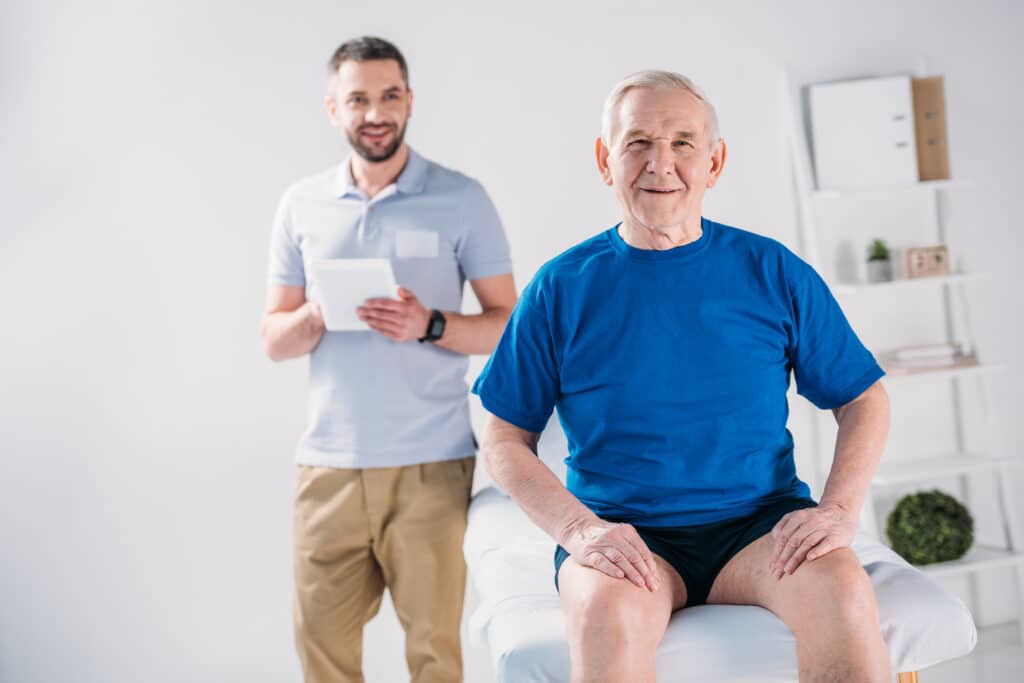
Regarding treatment options for hip flexor pain, the approach depends on the severity and root cause of the discomfort. Treatment usually involves a combination of rest, pain management tools, and physical therapy.
Treatments at Home
With less severe cases of hip flexor injury, it’s usually possible to manage pain and discomfort at home with good self-care.
Simple remedies such as heat therapy to help tight muscles relax can be effective ways to start feeling relief from tension, and over-the-counter medications such as acetaminophen or ibuprofen can help manage pain.
Giving your hips a break and rest is also important to recovery. Your body can’t heal as effectively if it’s always working, so prioritize rest and let the body’s natural recovery process do some work. Just remember to stay as active as you can without pain to help support your body as it heals.
These exercises should be used only as much as needed (with your doctor’s guidance) to help you progress into the next stages of your recovery from hip flexor pain.
Physical Therapy Approaches
For stubborn hip flexor pain and long-term hip health, I recommend exercises designed to strengthen and stretch the hip flexor muscles. Improving hip strength and flexibility means a less painful and more active life, which is especially important with advanced age.3
Below are a few of my favorite exercises for alleviating hip flexor pain, improving flexibility, and strengthening.
Kneeling Hip Flexor Stretch
This exercise stretches your hip flexor muscles and quadriceps to relieve muscle tension and reduce pain.
- Kneeling with your sore leg on the floor. You can place your hands on your hips, your front knee or a surface for stability.
- Engage your glutes, tuck your pelvis underneath you, and slowly shift your weight forward until you feel a stretch in the front of your hip.
- Hold for 30 seconds to a minute and repeat 2 to 4 times on both legs.
Bridge Exercise
This exercise helps lengthen the hip flexors and strengthen the gluteal muscles, which is especially important for comfortable motion.
- Lie on your back with your arms by your sides. Bend your knees so your feet are flat on the floor, hip-width distance apart.
- Squeeze your glutes and engage your abdominal muscles, then push into your heels as you lift your hips off the floor toward the ceiling. Try to create a straight line from your knees to your shoulders.
- Hold for a second or two before slowly lowering your hips to the floor again.
- Repeat 10 to 20 times or until your hips feel tired.
Bridges can be modified in many ways to fit just about any fitness level, so don’t be afraid to experiment with this one. One of my favorite versions involves adding a resistance band around your thighs to strengthen your hips even more!
Standing March With Hold
Marches are an effective exercise that can be used to strengthen your hip flexor muscles, and adding a hold to the exercise can make it more challenging.
- Stand with your feet hip-width distance apart, using a counter or chair for support as needed.
- Raise your right knee toward your chest with your knee bent so your thigh is parallel to the floor.
- Hold for about 5 seconds, then switch and repeat on the other side.
Of course, if this exercise is too easy for you, you can increase the length of the hold or add resistance, such as an ankle weight or resistance band. If balance is a big challenge, you can also do it standing with your back against a wall.
Preventing Hip Flexor Pain and Injury
Although good self-care and exercise can be key components of your recovery from hip flexor pain, lifestyle changes that support healthy hips will do the rest of the work for your hip health.
For example, maintaining a healthy weight can help reduce the stress on your hips, and regular physical activity like walking will promote strong and mobile hip flexors. In addition, practicing good posture and body mechanics will help reduce unnecessary stress on your hip flexors during physical activity.
I’ve found that most of the older adults I work with benefit from establishing a regular activity routine that incorporates exercise, self-care, and reminders for other important things like posture.
Living with pain and limited mobility because of hip flexor pain doesn’t have to be a permanent issue, but it can take time to recover fully. Don’t be discouraged by the time it takes to reach your goals and remember to celebrate your progress every step of the way. Taking steps to improve your hip flexor strength and flexibility means you’ll be able to live a meaningful life.
Summary
Hip flexors, vital for movements such as walking and bending, can suffer from pain due to a variety of reasons, including both overuse and underuse. Effective management strategies include at-home care like heat therapy, over-the-counter pain relief, and targeted physical therapy exercises designed to strengthen and stretch the hip flexors. Emphasizing the importance of understanding the causes behind hip flexor pain, I advocate for a comprehensive approach combining treatment, regular exercise, and lifestyle adjustments to ensure recovery and long-term hip health and mobility for an active lifestyle in older adulthood.
Key Takeaways
We’ve covered a lot here, but there are a few key things to remember when it comes to hip flexor pain and your recovery:
- Hip flexor pain is common in older adults, but understanding the causes and management strategies is important for returning to an active lifestyle.
- The hip flexors are essential for the body to move and hinge properly. Keeping them healthy promotes mobility and reduces pain.
- Several factors contribute to hip flexor pain, such as a sudden injury, repetitive stress on the muscles, or muscle weakness.
- Regularly performing simple exercises to improve strength and flexibility reduces pain and helps prevent future injuries.
- Making small adjustments to daily habits, like thinking more about your posture, can help your hip flexors stay healthy long-term.
References
- Konrad A, Močnik R, Titze S, Nakamura M, Tilp M. The Influence of Stretching the Hip Flexor Muscles on Performance Parameters. A Systematic Review with Meta-Analysis. Int J Environ Res Public Health. 2021 Feb 17;18(4):1936. doi: 10.3390/ijerph18041936. PMID: 33671271; PMCID: PMC7922112.
- Frizziero A, Vittadini F, Pignataro A, Gasparre G, Biz C, Ruggieri P, Masiero S. Conservative management of tendinopathies around hip. Muscles Ligaments Tendons J. 2016 Dec 21;6(3):281-292. doi: 10.11138/mltj/2016.6.3.281. PMID: 28066732; PMCID: PMC5193517.
- Santamaría G, Rodríguez I, Rodríguez-Pérez V, Cobreros-Mielgo R, Lantarón-Caeiro E, Seco-Casares M, Fernández-Lázaro D. Effect of Hip Muscle Strengthening Exercises on Pain and Disability in Patients with Non-Specific Low Back Pain-A Systematic Review. Sports (Basel). 2023 Sep 1;11(9):167. doi: 10.3390/sports11090167. PMID: 37755844; PMCID: PMC10536491.

